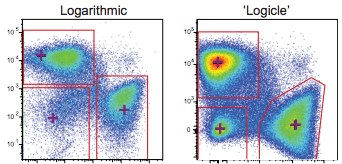

This is necessary due to the large dynamic range of most antibody conjugated fluorochromes. Traditional logarithmic scaling compresses the channels of visual space as the scale increases. With the introduction of biexponential transformation, distributions around zero can now be observed. Thus it has become imperative to transform the data in such a way so that the axis ‘pile-up’ can be observed. As the list of parameters in modern flow cytometric experiments expands, more compensation error is introduced into the final results (see this paper by Dr. Further contributing to this phenomenon of ‘negative’ fluorescence is the contribution of compensation error or what is called ‘spreading’. Fluorescent baseline subtraction error during acquisition is a fundamental of flow cytometry and the basic reason why negative fluorescence is observed ( for more, click here). In a standard log scale, there is no zero and no negative, so data is ‘piled-up’ on the axis in the first channel. Traditionally, without biexponential transformation, after background fluorescence subtraction and the introduction of compensation error, data points may have negative fluorescence.

Data visualization is important in flow cytometry data analysis – transformation provides a method to visualize populations in a shape that’s easier to interpret by eye, because they resemble normal distributions.


 0 kommentar(er)
0 kommentar(er)
